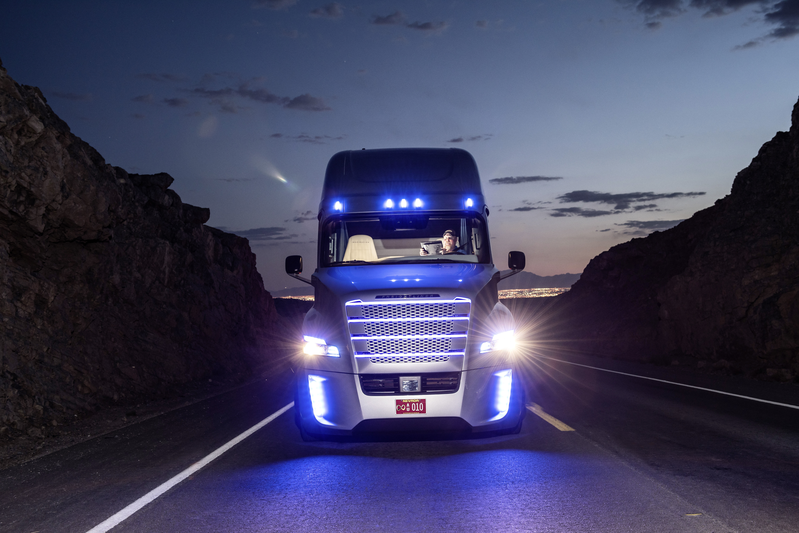
We’ve all seen the warning on the passenger side mirror of our cars: “Caution, objects in mirror are closer than they appear.” It stands alongside such gems as “Caution, contents are hot” on our coffee cups as phrases that appear so often as to lose all significance or meaning. But take a close look. That truck with the empty cab where the driver used to sit may in fact be a lot closer than you think.
Two main pathways to driverless trucks seem to be evolving. The first is the truly autonomous truck capable of navigating itself in the manner of Google’s self-driving car. Heavy-duty truck manufacturer Freightliner in May unveiled the first such truck, the “Inspiration,” with great fanfare, including the largest multimedia presentation ever — on the side of the Hoover Dam.
Significantly, the “Inspiration” has been licensed to operate within Nevada, so it’s not merely a fantasy. The truck uses a combination of technologies, including video and radar, to navigate itself safely over interstates and rural roads. There is no plan to use it in city driving, and Freightliner isn’t positioning it as a driverless truck, but rather a truck in which the driver can, under the appropriate circumstances, multitask — checking in with the office or having a cup of coffee, for example — while the truck takes care of the driving business.
The other pathway to autonomy is called platooning, in which trucks form a convoy of two or more vehicles, with the trailing truck(s) tucked in tight behind the leader. What would normally be considered unsafe tailgating becomes safe because the trailing trucks are in constant electronic communication with the lead truck and are prepared to react instantly to any quick braking event.
The driver maintains directional steering of the trailing truck, while the platooning technology takes care of the throttle and brake. The immediate payoff is fuel savings as the trailing trucks operate within the aerodynamic slipstream of the leader and no longer have to expend fuel shoving air aside at 65 mph.
A recent research report released by the American Transportation Research Institute pegged the fuel savings for the trailing trucks at up to 10 percent. But there’s more, because the system also provides the proverbial free lunch in that the lead truck doing all the aerodynamic work also achieves fuel savings of up to 5 percent, as the trailing unit fills up the aerodynamic hole in back of the leader’s trailer that otherwise would be acting as a source of drag.
Of the two approaches, platooning is the more interesting one to me with regard to near-term potential. The fuel savings offer an economic avenue to fund adoption and will enable commercialization. The legal challenges will be fewer because the driver nominally continues to control the vehicle.
Over time, millions of miles of experience will be gained, funded by fuel savings. This will generate increasing confidence in the safety and efficacy of the system. The technology undoubtedly will continue to evolve, with the machine eventually taking over all aspects of the driving in the trailing unit, and the driver becoming more of a passenger. This glide path leads inevitably to the question of whether the trailing units need a driver at all.
The platooning approach also has the support of some Class 8 truck manufacturers. Peterbilt, for example, participated in the ATRI study, and Volvo Trucks recently invested in Peloton Technologies, a leader in the evolving platooning technology. A peloton is the tightly bunched group of cyclists in a cycle race so the name is an apt one.
There are obvious obstacles to adoption that will need to be overcome, most notably the liability question. Will truck manufacturers open themselves up to new exposure when these AI trucks are involved in the inevitable accident? Public acceptance also will be an issue. Will it be possible to train Joe Sixpack not to drive his minivan between platooning trucks when he realizes he’s about to miss his exit? Last but by no means least, the regulatory framework must be created.
The theoretical future of my childhood years hasn’t come to pass. I’m reminded of that every time I look up and nary a flying car can be seen. But driverless trucks will become a reality. Not to minimize the obstacles, but the payoff is large. That’s why I think they will come sooner than we would have thought possible even just a year or two ago.